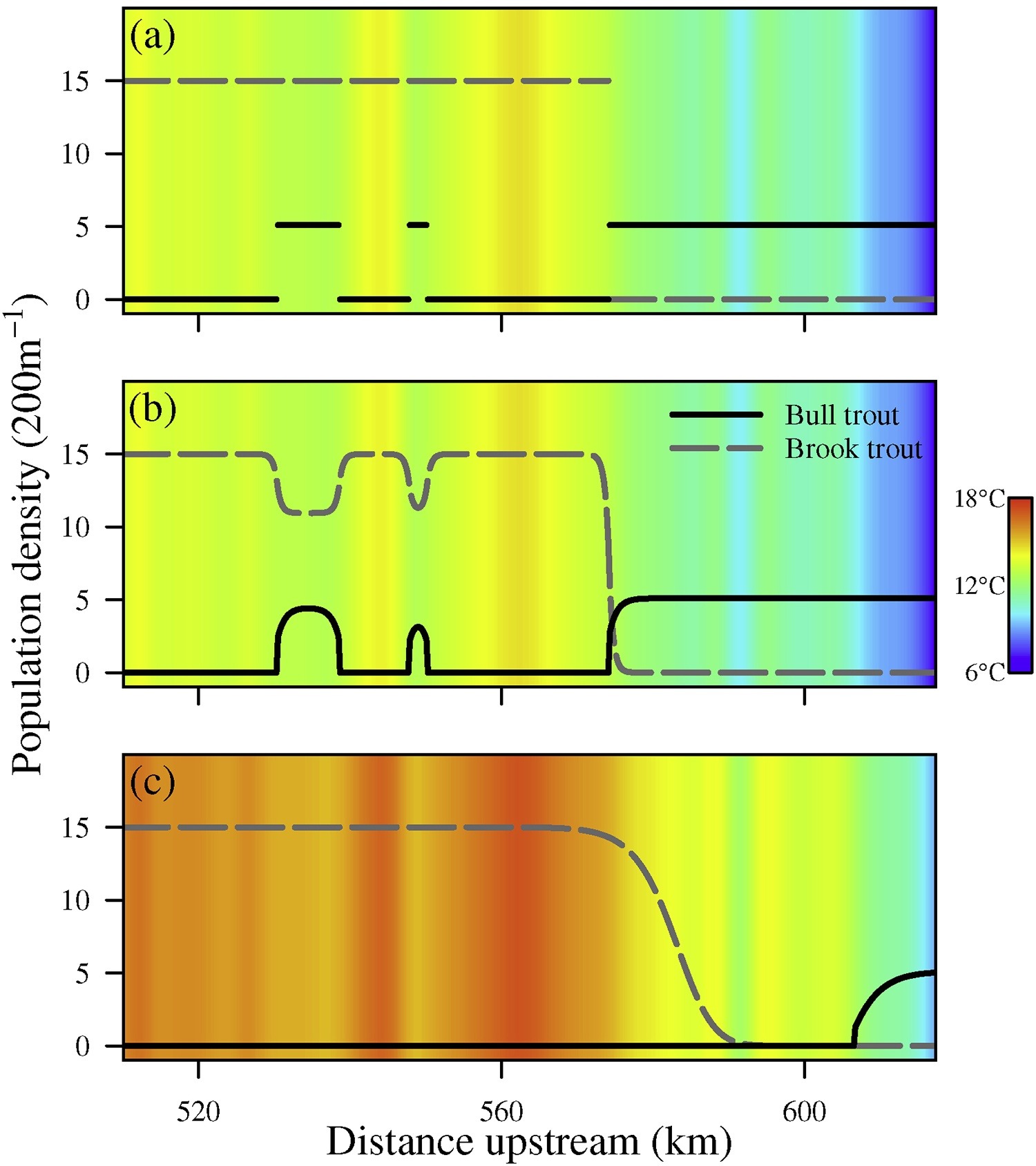Population persistence in the face of climate change and competition: a battle on two fronts
Published in Ecological Modelling, 2018.
Rinnan DS. "Population persistence in the face of climate change and competition: a battle on two fronts." Ecological Modelling, 385, 78-88. https://doi.org/10.1016/j.ecolmodel.2018.07.004
Download here
Abstract:
Many species undergo significant shifts in population distribution in response to changes in climate. This response can introduce a species to new competition from invasive organisms, or influence the dynamics of an otherwise balanced ecosystem. How can a species ensure its own survival while dealing with both interspecific competition and the effects of climate change? We examine a two-species discrete-time, continuous-space population model to determine conditions for coexistence and criteria for persistence in a changing climate. Our analysis suggests that the cost of keeping pace with climate change can weaken the ability of a species to compete with others, and that climate change has the capacity to shift the stable-state solution of the population model. These effects are somewhat mitigated by niche differentiation, with the potential for habitat considered inhospitable to one species to provide refuge for the other.
Using this model we simulate a hypothetical population of native bull trout Salvelinus confluentus experiencing competition from invasive brook trout S. fontinalis as their river habitat warms due to climate change. Based on current climate projections, we find that bull trout are likely to disappear from the study area by 2080, with brook trout expanding their range in the absence of competition.

